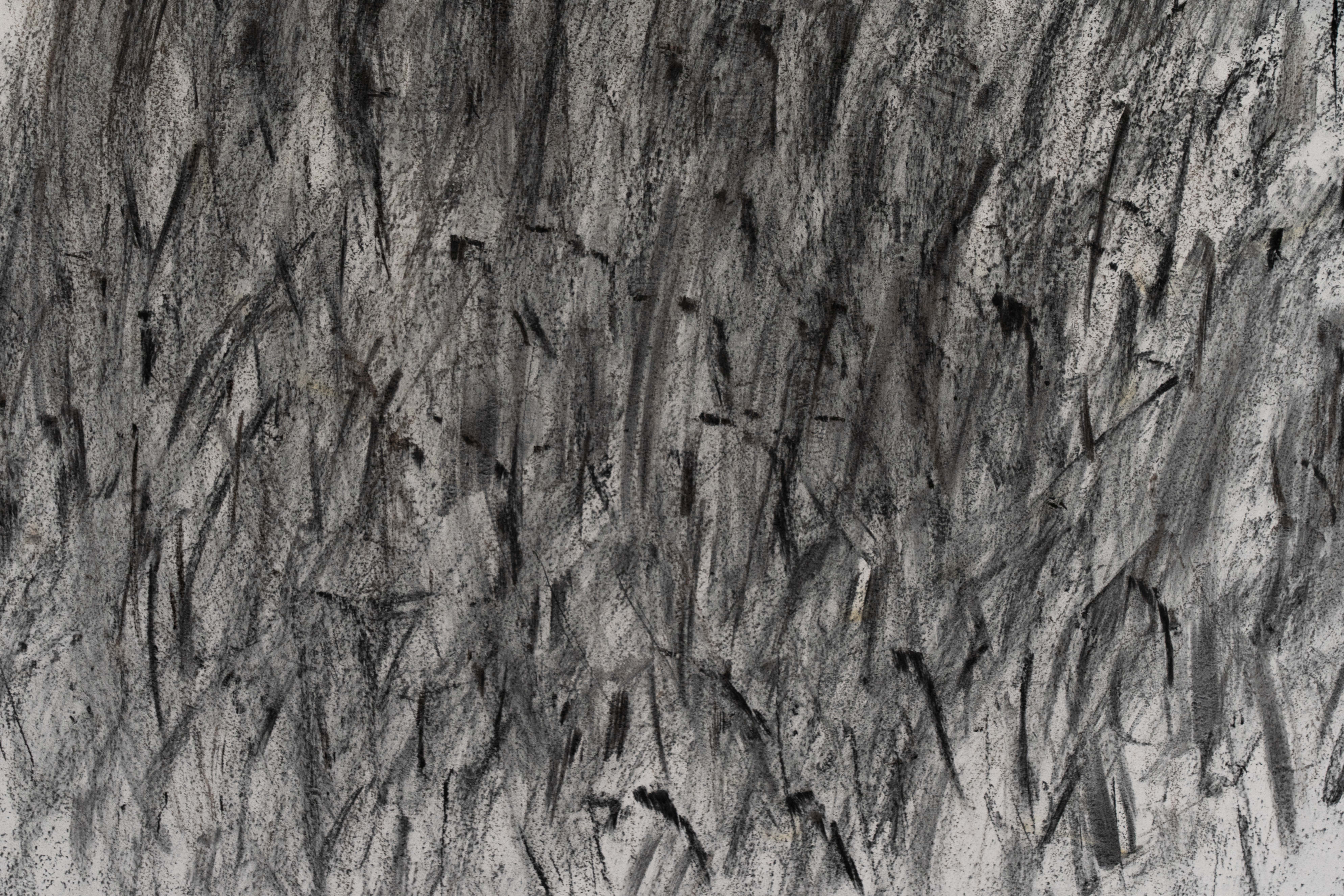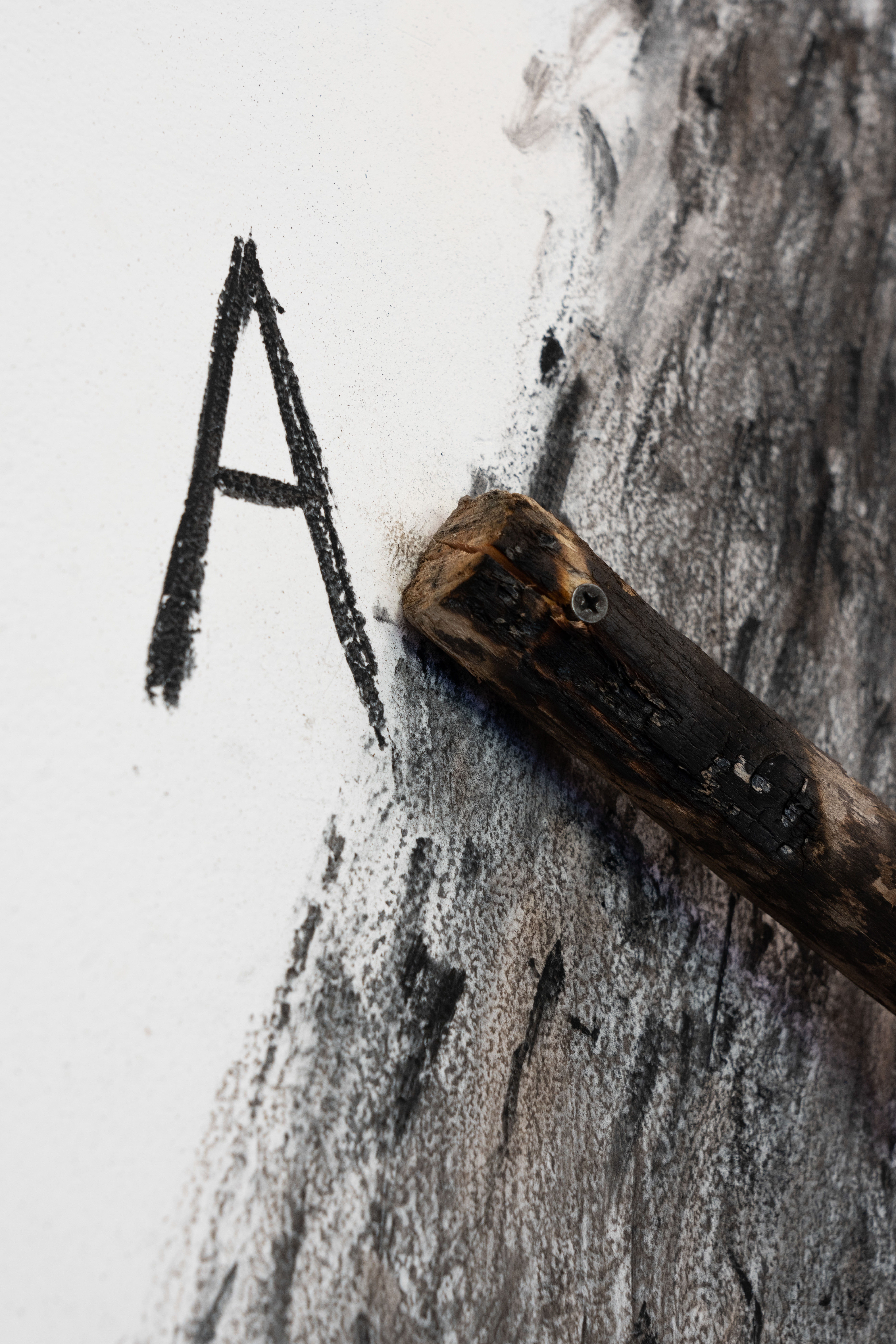




 Grass, Mountain and Traffic Cone
Grass, Mountain and Traffic Cone 2021
burned branches, nails
A mathematical problem from my primary school, “What is the shortest distance when an ant walks from A to B on a cone?” ha been lingering around my mind for a long time along with my observation of traffic cones when I am wandering around in New York city. The shortest distance from A to B is the length of straight line, though it is an irregular curve on a cone. I am interested in the gesture of unfolding when we solve this mathematical problem. It is not unlike people’s collective experiences when they walk across a lawn in a park and form “desire path,” which is shaped by convenience and efficiency.
Traffic cones also contain a sense of construction and deconstruction, carrying the meaning of policing to mark the boundary in public space suggesting where to go and where not to go. Thinking about the relationship between our bodies and traffic cones while countlessly passing by the signage “No Trespassing” , I started to make some mark-drawings with natural materials such as burned branches inspired by mono-ha movement happened in 1960s’ in Tokyo. I am interested in the forces and body movements activated on the burned branche when I was drawing on the wall, which creates different patterns and forms along with different states of being as branches in a spread-out space. Followed by the gesture of gravitational shift with branches, I am intrigued by the process of falling down and spreading out when the branches were hit against the wall. The image of the installation as a whole is like a decaying mountain with a marked trail inside. What was left on the floor are some small parts of the branches, some are powders, some are ashes. I got reminded of what a great poet Juyi Bai from Tang Dynasty wrote, “Lush, lush grass on the plain; Once every year it sears and grows. The wildfire tries to destroy it in vain; When the verna breeze blows, it comes to life again.” (Translated by Zheng Yu, Huazhan Feng)
Traffic cones also contain a sense of construction and deconstruction, carrying the meaning of policing to mark the boundary in public space suggesting where to go and where not to go. Thinking about the relationship between our bodies and traffic cones while countlessly passing by the signage “No Trespassing” , I started to make some mark-drawings with natural materials such as burned branches inspired by mono-ha movement happened in 1960s’ in Tokyo. I am interested in the forces and body movements activated on the burned branche when I was drawing on the wall, which creates different patterns and forms along with different states of being as branches in a spread-out space. Followed by the gesture of gravitational shift with branches, I am intrigued by the process of falling down and spreading out when the branches were hit against the wall. The image of the installation as a whole is like a decaying mountain with a marked trail inside. What was left on the floor are some small parts of the branches, some are powders, some are ashes. I got reminded of what a great poet Juyi Bai from Tang Dynasty wrote, “Lush, lush grass on the plain; Once every year it sears and grows. The wildfire tries to destroy it in vain; When the verna breeze blows, it comes to life again.” (Translated by Zheng Yu, Huazhan Feng)